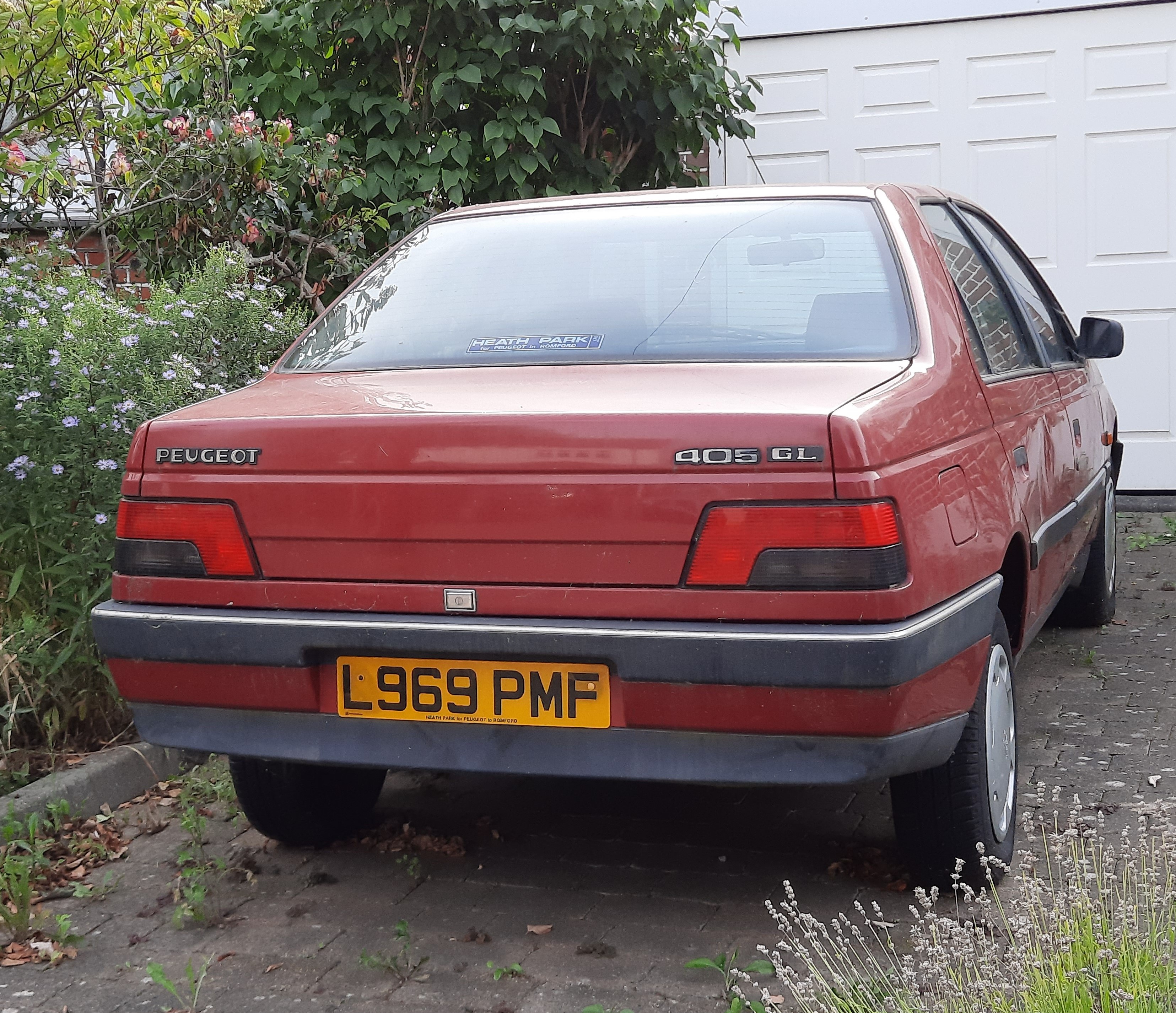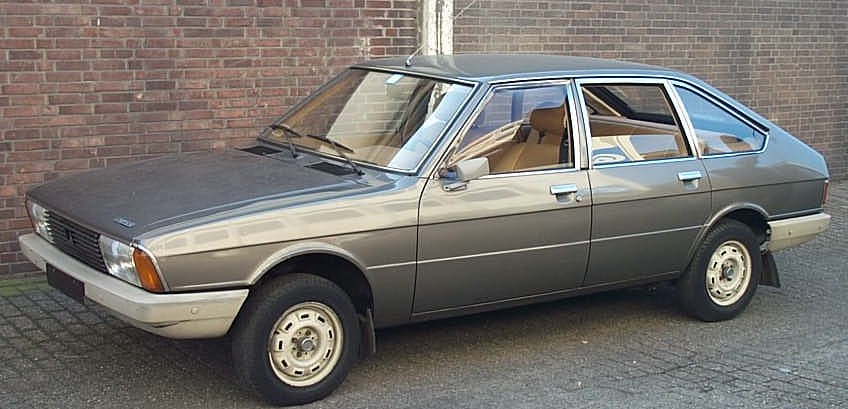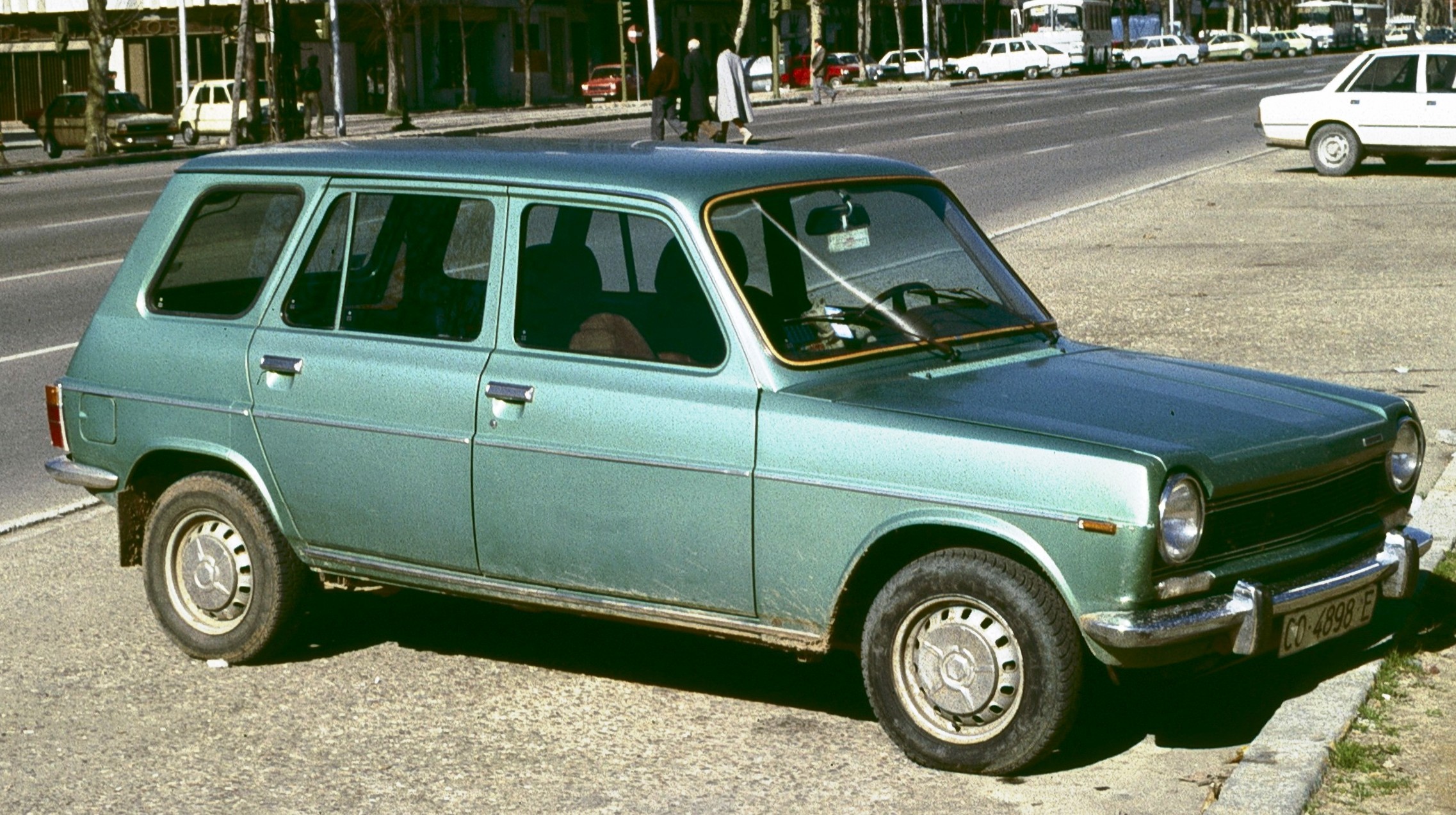|
Simca 1307
The Simca 1307 is a large family car produced by Chrysler Europe and subsequently PSA Peugeot Citröen from 1975 to 1986. Codenamed 'C6' in development, the car was styled in the United Kingdom by Roy Axe and his team at Whitley, and the car was engineered by Simca at Poissy in France. A modern, front-wheel drive hatchback, it was one of the earliest such cars in the class along with the Renault 20, Renault 30 and Volkswagen Passat, and became the 1976 European Car of the Year. It had been in development since 1972. The model was marketed variously as the Simca 1308 and 1309 models (with larger engines), Chrysler Alpine (UK, Ireland and New Zealand), Dodge Alpine (Colombia), Chrysler 150 (Spanish market), and later Talbot 1510 / Talbot Alpine / Talbot 150 (a facelifted version launched by PSA after its takeover of Chrysler Europe) and Talbot Solara (the saloon version). History Originally the car was powered by 1294 cc and 1442 cc versions of the "Poissy engine" ... [...More Info...] [...Related Items...] OR: [Wikipedia] [Google] [Baidu] |
Chrysler Europe
Chrysler Europe was the American automotive company Chrysler's operations in Europe from 1967 through 1978. It was formed from the merger of the French Simca, British Rootes and Spanish Barreiros companies. In 1978, Chrysler divested these operations to PSA Peugeot Citroën. PSA rebadged the former Chrysler and Simca models with the revived Talbot marque, but abandoned the brand for passenger cars in 1987, although it continued on commercial vehicles until 1994. Among the remaining Chrysler Europe assets still in existence are the former Simca factory in Poissy, the former Barreiros plant in the Madrid suburb Villaverde, which both serve as major Peugeot-Citroën assembly plants, and the Rootes Group research and development complex in Whitley, Coventry, which is now the headquarters of Jaguar Land Rover. History Formation Chrysler Corporation had never had much success outside North America, contrasting with Ford's worldwide reach and General Motors' success with O ... [...More Info...] [...Related Items...] OR: [Wikipedia] [Google] [Baidu] |
Peugeot 405
The Peugeot 405 is a large family car released by the French automaker Peugeot in July 1987, and which continues to be manufactured under licence outside France, having been discontinued in Europe in 1997. It was voted European Car of the Year for 1988 by the largest number of votes in the history of the contest. About 2.5 million vehicles have been sold worldwide, both in LHD and RHD, as a saloon and estate. Inearly 2020, the 33-year production run of the Peugeot 405 was counted as the twentieth most long-lived single generation car in history."Survivors: The world's longest-living cars – Autocar Its appearance is similar to the |
Large Family Car
The D-segment is the 4th category of the Euro Car Segment, European segments for passenger cars, and is described as "large cars". It is equivalent to the Euro NCAP "large family car" size class, and the present-day definition of the mid-size car category used in North America. Compact executive cars are part of the D-segment size category. D-segment sales represent approx. 7% of the market in 2010s. Characteristics Most D-segment cars are Sedan (automobile), sedans/saloons or Station wagon, wagons/estates but hatchbacks, and coupes have been common. Pricing and specification of D-segment cars can vary greatly, from basic low-cost transport to more luxurious and expensive models. Current models In 2020 the fifteen highest selling D-segment cars in Europe were the BMW 3 Series, Volkswagen Passat, Tesla Model 3, Mercedes-Benz C-Class, Audi A4/S4/RS4, Škoda Superb, Volvo S60/V60, Peugeot 508, Audi A5/S5/RS5, Ford Mondeo, Opel/Vauxhall Insignia, BMW 4 Series, Volkswage ... [...More Info...] [...Related Items...] OR: [Wikipedia] [Google] [Baidu] |
Roy Axe
Royden Axe (September 1937 – 5 October 2010) was a British car designer. Early life and career Axe was born in Scunthorpe and attended Scunthorpe Grammar School (now St Lawrence Academy). Axe began his career in 1959 with the Rootes Group where he progressed first to chief stylist and then to design director. Rootes became part of Chrysler Europe in 1966. Axe led the styling efforts on almost all of the Chrysler/Rootes/Simca products of the early to mid-1970s; the car models involved included the Simca 1308/Chrysler Alpine and Chrysler Horizon which won European Car of the Year in 1976 and 1978, respectively. Following Chrysler Europe's collapse in 1977, Axe moved to Detroit to head Chrysler's styling studios in the United States. In 1982, Axe returned to the United Kingdom, joining British Leyland (BL) where he took over as styling director from David Bache (who had been sacked from BL owing to disagreements with the company boss Harold Musgrove over the still under develop ... [...More Info...] [...Related Items...] OR: [Wikipedia] [Google] [Baidu] |
Simca Horizon
The horizon is the apparent curve that separates the surface of a celestial body from its sky when viewed from the perspective of an observer on or near the surface of the relevant body. This curve divides all viewing directions based on whether it intersects the relevant body's surface or not. The ''true horizon'' is a theoretical line, which can only be observed to any degree of accuracy when it lies along a relatively smooth surface such as that of Earth's oceans. At many locations, this line is obscured by terrain, and on Earth it can also be obscured by life forms such as trees and/or human constructs such as buildings. The resulting intersection of such obstructions with the sky is called the ''visible horizon''. On Earth, when looking at a sea from a shore, the part of the sea closest to the horizon is called the offing. Pronounced, "Hor-I-zon". The true horizon surrounds the observer and it is typically assumed to be a circle, drawn on the surface of a perfectly spheri ... [...More Info...] [...Related Items...] OR: [Wikipedia] [Google] [Baidu] |
Simca 1100
The Simca 1100 is a car built from 1967 to 1982 by Simca. It was replaced by the Simca-Talbot Horizon. History The 1100 was the result of "Project 928", started in 1962, finalized by engineers Philippe Grundeler and Charles Scales. The design was a result of Simca's market research in the early 1960s, which showed the increasing popularity of front wheel drive cars that provided better utilization of space and comfort in small cars. In Spring 1962, Simca organized a 1966–67 launch of a new range of front wheel drive cars with saloons, estates cars and light commercial vehicles to be included, all fitting into France's 6CV tax class – between the Simca Mille and Simca 1300. Both transverse and longitudinal engine placement were tested, and in 1963 the transverse-engine design was approved. The Simca 1100 was one of the first designs outside Fiat to feature a transverse engine with an end-on gearbox and unequal length driveshafts (now near-universal amongst small cars), a possibl ... [...More Info...] [...Related Items...] OR: [Wikipedia] [Google] [Baidu] |



